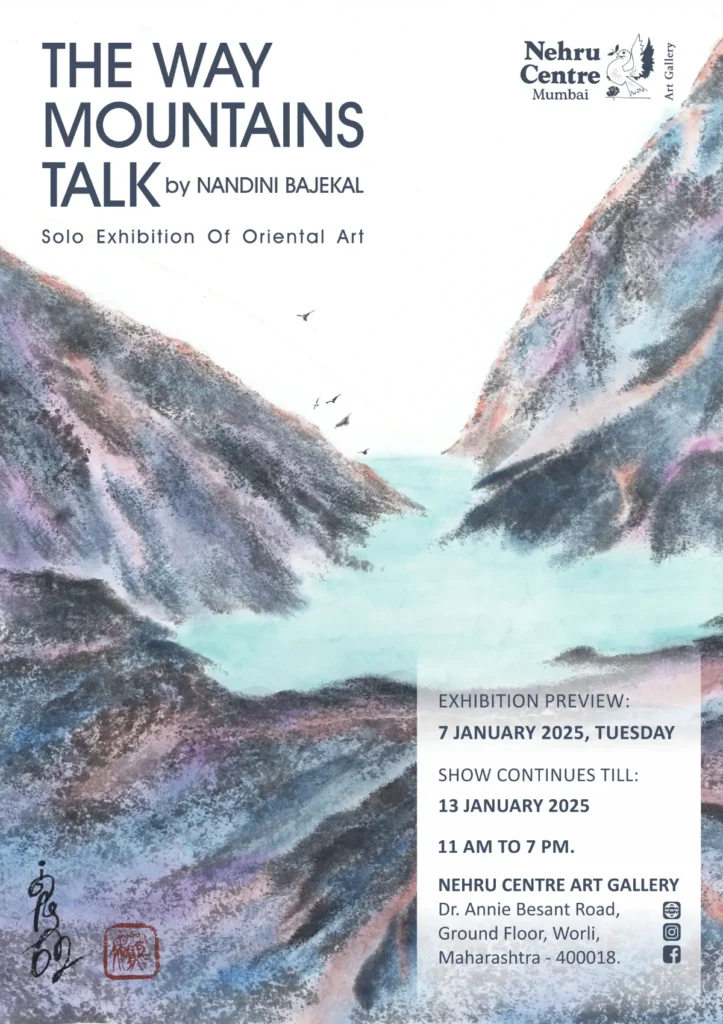07-13 January 2025
The way mountains talk
Nandini Bajekal
About The Style
Believed to have originated in China around 4000 BCE, Oriental Brush Painting is one of the oldest artistic traditions in the world. In due course, it spread throughout the orient. This style of painting involves using black ink and natural pigment colours on extremely thin rice paper and has many unique features. The brush is held in the same way the user holds chopsticks and is very sensitive to the slightest movement or pressure. No sketch is prepared and the artist paints with definitive strokes transporting an entire ‘mind-image’ directly on to the rice paper, which is very thin and vulnerable to blotting.
The core concept is to capture the spirit of the subject with emphasis on the ink work. Each stroke, must be alive, exhibiting spontaneity and freedom. The more engaging the brushwork, the stronger is the painting. Once the brush stroke is made, the painting cannot be corrected, edited, or touched up. From the first stroke to the last, the artist must ‘get it right’, making it an extremely demanding art form.
Colour is used to reinforce or enhance the mood or feeling. The brush is dipped in different colours in succession after which it is rolled on a palette to mix them. When a brush stroke is made, it displays the desired gradations of colours in a single stroke.
Empty space is an integral part of the composition. The final artwork is an expression of the artist’s inner self.

About
Nandini Bajekal has a bachelor’s degree in applied art from Sir J. J. Institute of Applied Art, Mumbai, a diploma in Cinema from Xavier’s Institute of Communications, Mumbai, and a diploma in Writing for Children and Teenagers from Institute of Children’s Literature, USA. She has been trained in Oriental brush painting in Singapore and has been a practitioner of this art form for over 25 years.
"What People Say"
January